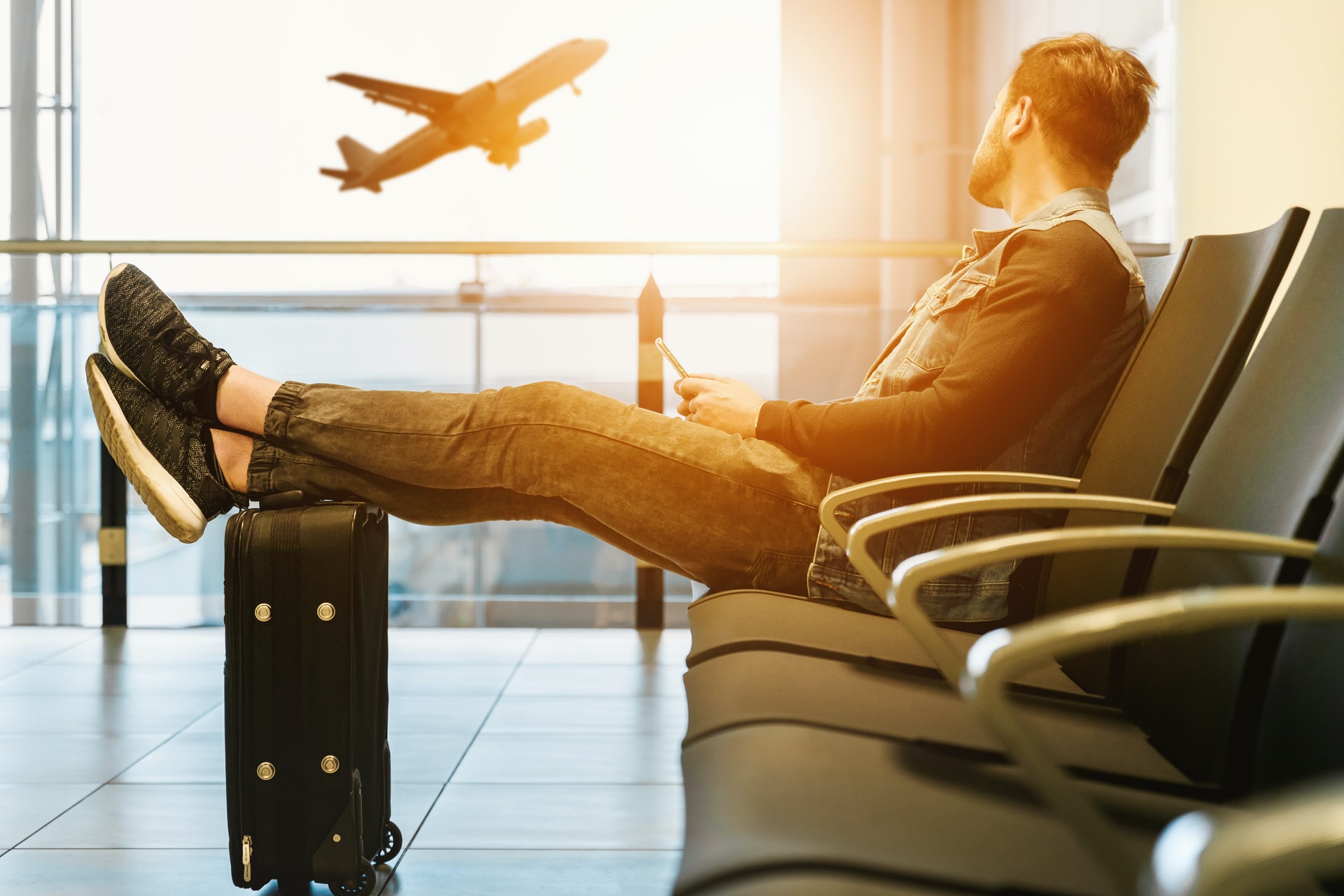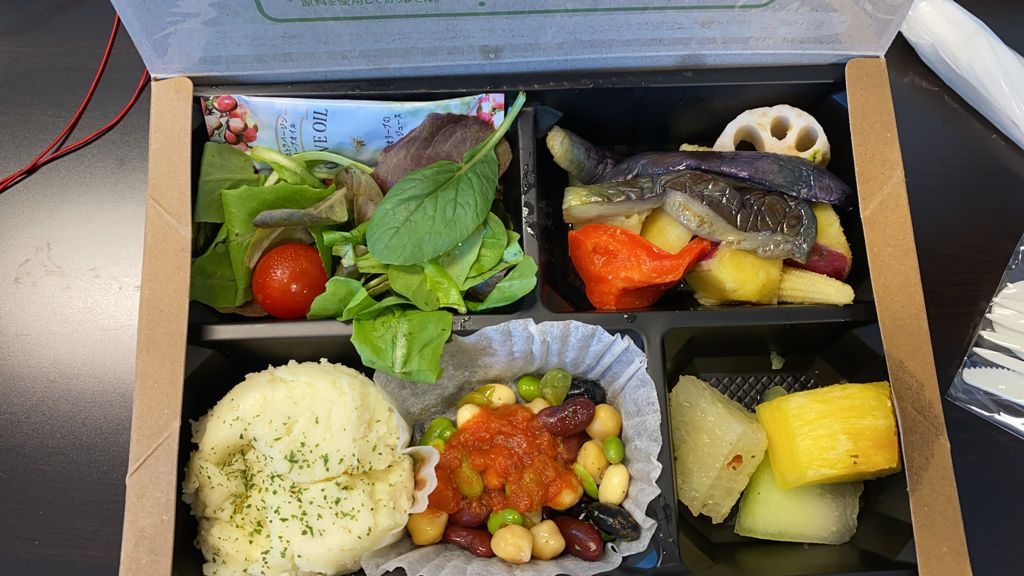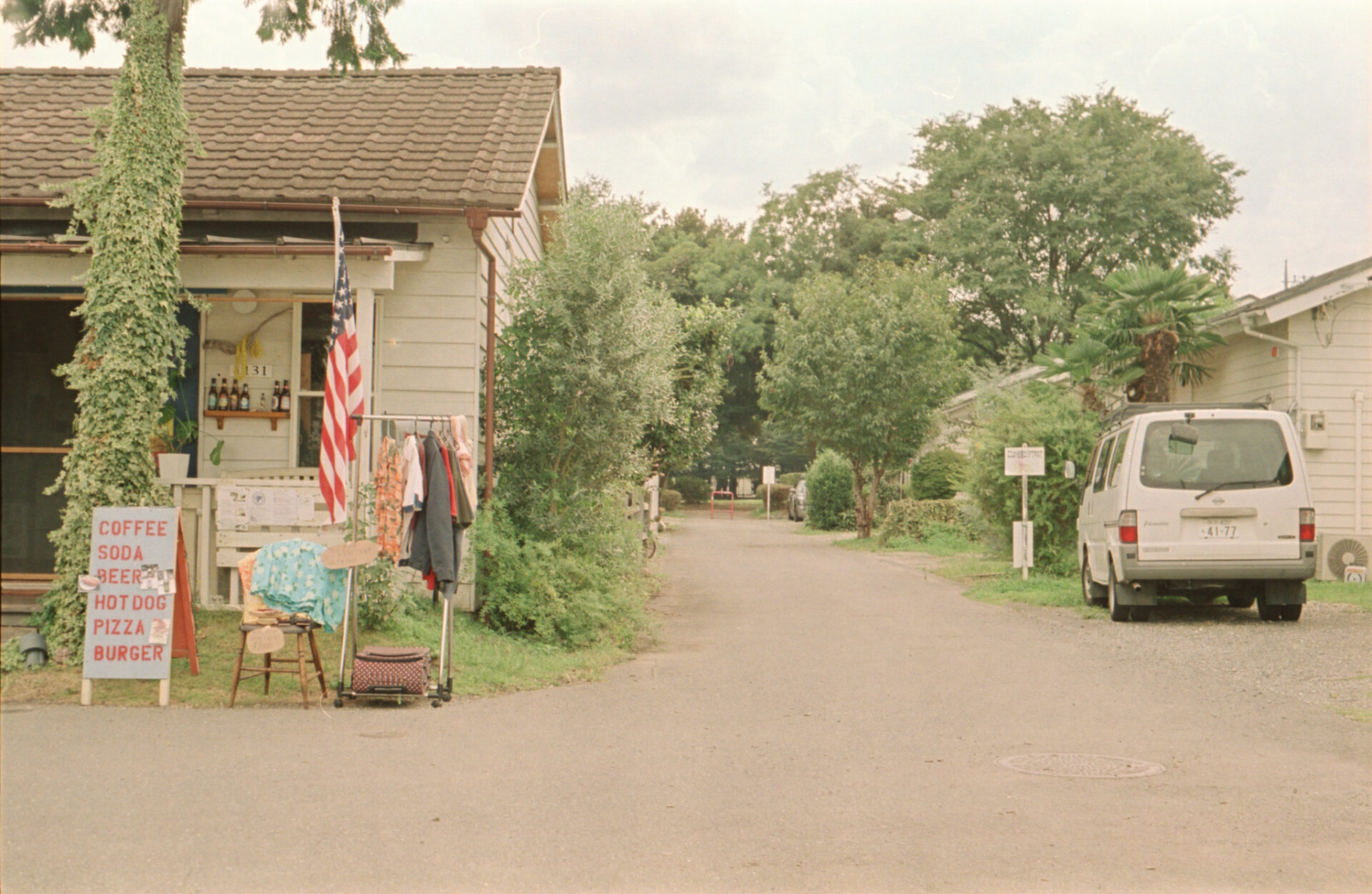Living in Japan or generally living abroad is for many a dream, a dream that I am fortunate to live. As long as I can remember, I have always wanted to live abroad for at least a couple of years. I have never been one to miss home, thinking I am always 1 (or maybe 2) flights away from home, I have lived in Australia, Finland, Singapore and now in Japan. But when the coronavirus arrived in our world, travel was limited and many borders were closed. In March 2020, Japan also closed its borders and even international residents with a valid visa couldn’t re-enter the country at the time. Fortunately, this strict lockdown lasted for a couple of months and now some of Japan’s international residents (still not all) can travel back to their home country and come back to Japan. I recently travelled back to the Netherlands, my home country, and after two weeks returned to Japan again. Here I will describe the whole experience, things I had to think of, PCR testing, and other rules I had to follow.
Important to note a few thing here: 1) all countries have their own entering rules and obviously they not only change per country, but they also (frequently) change. For the latest information always check the website of the Ministry of Foreign Affairs (MOFA), here you can find the up-to-date information regarding travelling back to Japan for residents. 2) This article is purely based on my own experiences of travelling to the Netherlands and back to Japan, everyone might experience is differently, find yourself in a different situation of face different problems. I’m merely sharing my personal experience with others on the international travel in and out of Japan, the arrival at Narita International Airport and the mandatory quarantine. 3) At the time of writing, Japan is not issuing any tourist visa and work visa are also being issued very limited. We don’t know any more than the information that is published by MOFA about when this will change again.
My situation:
- I have been living in Tokyo for just over 2 years and have a valid work-visa for 3 years;
- I am Dutch and travelled to the Netherlands in August & September ’21 for holidays;
- I am fully vaccinated and received an international vaccination certificate in Japan.
1. Travelling out of Japan during COVID-19
Travelling out of Japan was the easiest step for me. As mentioned before I am Dutch and travelling to the Netherlands was quite easy, with several direct flights operated by Air France-KLM from Tokyo to Amsterdam per week. In addition, no negative PCR-test was needed, nor a vaccination record. Even quarantine or PCR-testing upon arrival was not required. However, this has changed just a few days after I came back to Japan, so again always check the latest information on the official websites of the countries you are traveling to and from.
We left our house early in the morning, used public transportation to get to Narita International Airport and after checking in our luggage, went through customs. It was super quiet at Narita Airport and the whole process went really fast. We had to get a re-entry permit at customs, which meant writing down your details on a piece of paper that is given to you there. The custom officer will glue this in your passport, so you can’t easily lose it (and you do need it upon arriving back in Japan!). We did some last minute gift shopping as most of the shops were open at Narita Airport, including the konbini and the Starbucks near the gates. Our flight with KLM held maybe 70 passengers and when we arrived at the gate before boarding time, most of the passengers were already on board.
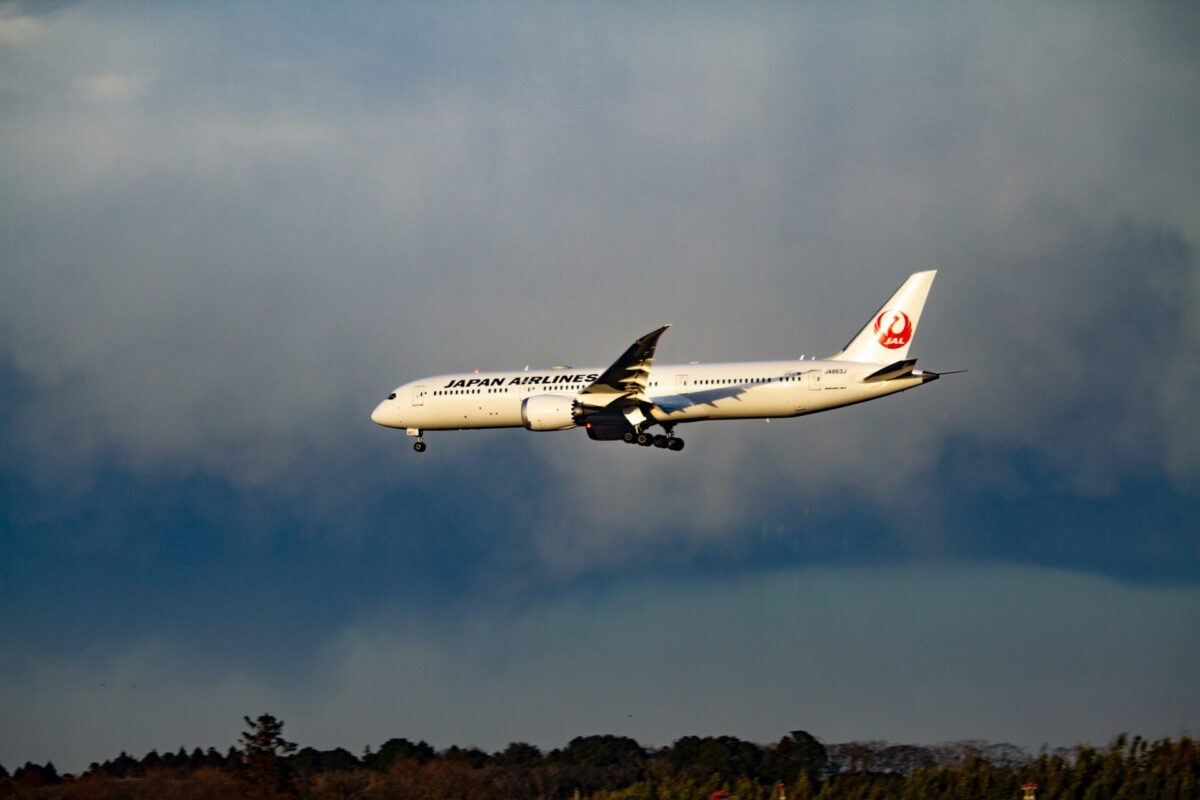
2. Preparing to travel back to Japan for residents
After enjoying some quality time at home and getting used to the rules & restriction that were in place, we started making arrangements for when we would travel back to Japan. There was one thing that we needed to prepare: the COVID-19 test. Currently, all those who enter, re-enter or return to Japan MUST be able to show ‘a certificate of negative test result of pre-entry COVID-19 test conducted within 72 hours prior to departing from the country/region where travelers stay when entering Japan‘. If you cannot submit a certificate of a negative test result you will not be permitted to enter Japan and will be send back. Most likely you wouldn’t have been able to board the plane without this certificate anyway.
Certificate of negative test results
There is a format available of the certificate of negative test results to enter Japan online, basically the following information is required:
- Name, passport number, nationality, date of birth, sex;
- Testing method;
- Result, specimen collection date and time, test result date and time, date of issue;
- Name & address of medical institution, signature by doctor, imprint of a seal;
- All items must be written in English.
My flight was on a Thursday afternoon and we scheduled our PCR-test on Tuesday morning (a nasopharyngeal and oropharyngeal swab). We received our test results by e-mail the same day and checked all the data. Good thing we did; there was a mistake in my name and my passport number and that would mean the certificate is invalid, so they quickly changed it and emailed us a new certificate. On Thursday we printed the certificate ourselves in color and headed to the airport, where we had to show it already when checking in on our flight.
3. Arrival at Narita International Airport
On the flight we received some papers from the flight crew that we had to fill in and show upon arrival; the customs declaration form and a health questionnaire. All other papers, there were quite a few, we received at the airport itself. When we arrived at Narita, there was only 1 other flight from Paris that had arrived just before us, other than that it the place was deserted, a strange scene that made me kind of sad.
When you arrive there are a few things that you need to do, but the whole process is quite easy and straightforward. You will be guided by several handlers every step, they will also make sure you cannot skip a step. I did as I was asked and followed my group. Perhaps the order in which I did everything below isn’t 100% correct, but everything is there.
The first thing to do was the PCR-test. We were seated down, together with all the 28 passengers that were entering Japan, and were given some documents that we had to complete.These documents were a so-called health card, a questionnaire asking you where you had been last two weeks and if you had a negative test result certificate. Another document was asking if you have any symptoms, and a Written Pledge that you need to sign saying you will download the apps and report on your health condition. The documents were checked and we could continue to the next step; receiving a tube to spit in. The test to do upon arrival in Japan luckily was a saliva test. In the extreme case if you cannot produce enough saliva for testing, you can also get a nasal swab. You cannot eat and drink 30 minutes before the test, but by the time you have left the airplane and need to spit in the tube, 30 minutes have easily passed.
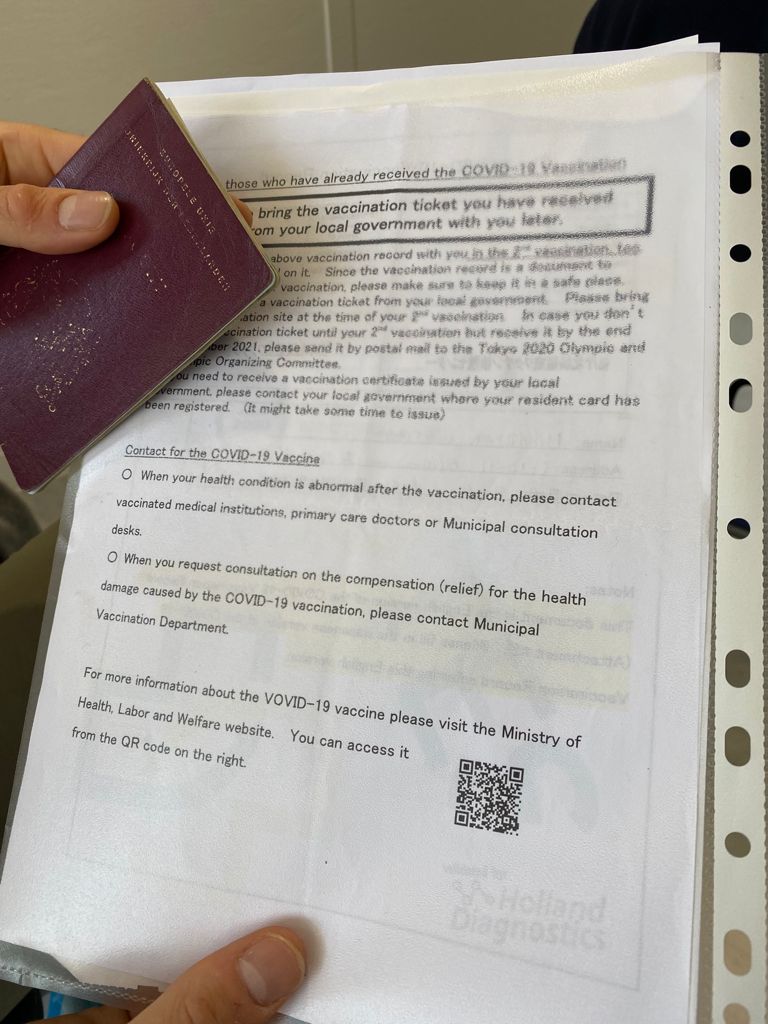
After the testing, we continued to the next step we had to download several apps and complete another questionnaire with some health questions. After completing the questionnaire we received a QR-code that you should screenshot as you need to show it later at some point at the airport. You obviously need a smartphone for all these apps and if you do not have one, you are obliged to rent one at the airport. We were told we needed to report on your location and health every day for two weeks! There is free WiFi at the airport available so you can download the apps. We were explained in English (I heard someone explaining in Spanish too) how to use the apps and all the location sharing settings were checked manually.
After another document and app check we were assigned seats in a different room where we had to wait for the PCR test results. I think in our case it took about 1,5 – 2 hrs before we got the results, negative – yay! We were taken to the next room where we were assigned a hotel and continued to the luggage belt to pick up our luggage. After that we had to wait another 20 minutes for the bus that brought us to the hotel. This was the first time that I noticed a vending machine too, so I quickly bought some green tea. I also went outside to breath in some fresh air, because I knew the next couple of days I wouldn’t be able to.
4. Hotel quarantine in Japan
From January 14, 2021 until further notice, everyone arriving in Japan needs to quarantine at home or other designated areas for 14 days. Depending on where you were staying within 14 days before your arrival in Japan you are required to quarantine for some days at a hotel (paid for by the Japanese government) or at home.
I had to quarantine for 3 days at a hotel, in my case the APA Ryogoku. We were transferred there from the airport and checked individually or per family. My husband and I were able to stay in the same room, depending on the availability in the hotel families with children will get either a family room or connecting rooms I was told (by friends with a toddler).
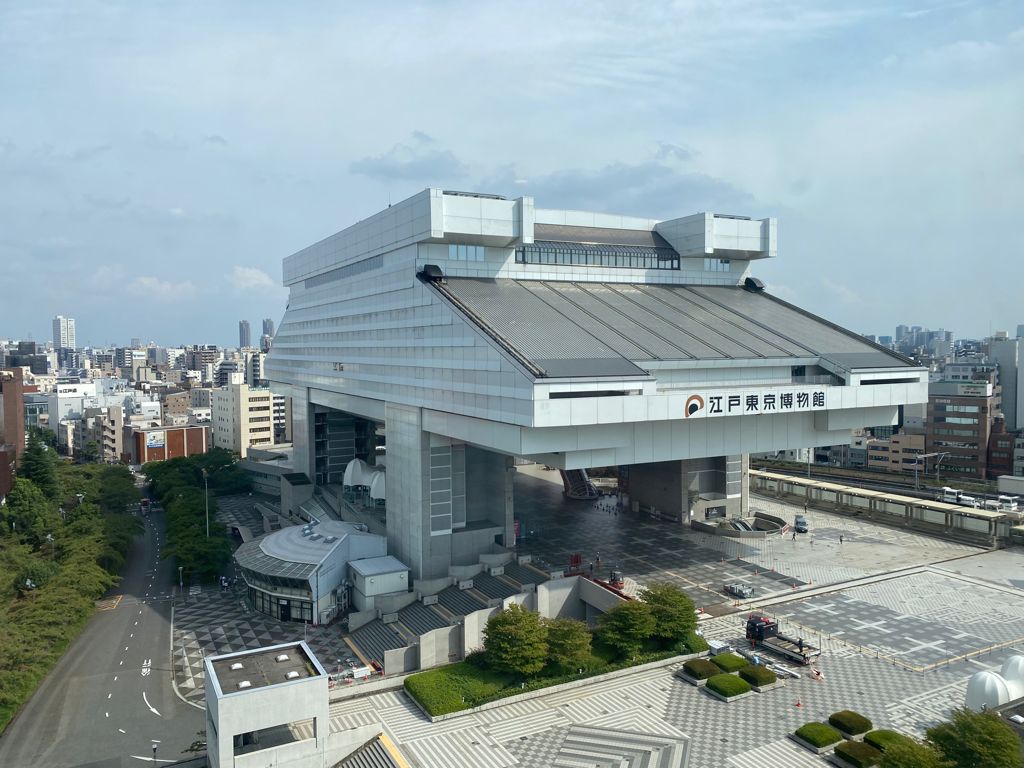
Hotel room & food during quarantine
After about 5-6 hrs since our arrival, we entered our room, the home for the next few days. We got a small corner room on the 13th floor and were lucky we had two windows which unfortunately could not open. In the hotel we were given 3 meals a day; at ~7am, ~12pm and ~5pm each day we were informed by a speaker announcement that the meal was served and we were not allowed to leave the room until the next announcement. I thought this was ironic since we were not allowed to leave the room anyway. The only thing I could think of was maybe the message aimed at the smokers, perhaps they are allowed to smoke a cigarette at some place? As I don’t smoke I don’t know how this is arranged. When checking in we were asked if we are smokers and we quickly said no, something I later regretted. I thought maybe that could have been my ticket to a minute of fresh air every day? But on the other hand they may just assign smoking rooms which would be a lot worse (for me). The food in the hotel was quite good, I had opted for the vegan option (a tip from a friend) and was happy with the fresh veggies and fruit every time. We also got a bottle of water each meal and there was coffee and tea in the room. Despite the food being good, I was also very happy that I had brought some snacks from home. The portions weren’t really big and pretty similar, so I was happy to be able to eat something else as well.

Breakfast 
Dinner
Each day we had to confirm our location using the MySOS app (multiple times), report on our health condition (before 8am) and answer a video call (random times). That was it really. We spend most of our time watching movies and television. The last day we both had to do some work but the WiFi worked well and we managed just fine.
We entered the hotel on Friday and on Monday morning we had to do a PCR test (saliva test) at 7am, before breakfast. This test came back negative around 2pm upon we were requested to directly come down for the check-out and transfer back to Narita International Airport. Unfortunately we couldn’t go home directly from the hotel, but were brought back to Narita by bus. When we arrived at Narita, the situation was a little weird, we didn’t really know what to expect but as it turned out we were just sort dumped at the bus stop and set free.
Getting home from Narita
In the written pledge that you have to sign, you commit to not using any public transportation for the first 14 days after arrival. You will need to arrange private transportation to get home. In our case we had rented a car that we picked up and returned close to our house which costed us about ~¥10,000 in total, including ETC and fuel.
5. Home quarantine Japan
After driving home, we shortly popped by the supermarket for some grocery shopping and checked-in at our new quarantine location in the MySOS app. We arrived home at a Monday and had to stay home until the Friday one week later. Everyday we received a 30 seconds AI phone call where we had to show our face and the surroundings. Additionally we got multiple notifications during the day saying we had to check-in using the app. Not complete freedom but a lot better than staying in a tiny hotel room.
Useful information for returning to Japan
- Website of the Ministry of Foreign Affairs (MOFA)
- Format of the certificate of negative test results to enter Japan
- FAQ for confirmation of Certificate of Testing for COVID-19
- Return to Japan Facebook Group
All in all I was very happy to be able to spend some time with my friends and family back home and it was totally worth it. But would I go through it again? I am not sure. The hotel quarantine was a strange experience, being locked up in a small room and not being able to go outside just feels very unnatural. I would 100% not be willing to do so for 6 days, let alone 14! Staying at home for another 11 days wasn’t all bad, I could get some fresh air and do exercise at least, but this too was smothering me – especially near the end. Overall the process was manageable, especially if you just keep patient, have all the right documents and bring some books, games and (important!) snacks to treat yourself. I am super happy to be back and hope to travel more in Japan soon.
Follow us on Instagram, Facebook and Twitter for more travel inspiration. Or tag us to get featured!
Happy travelling!
